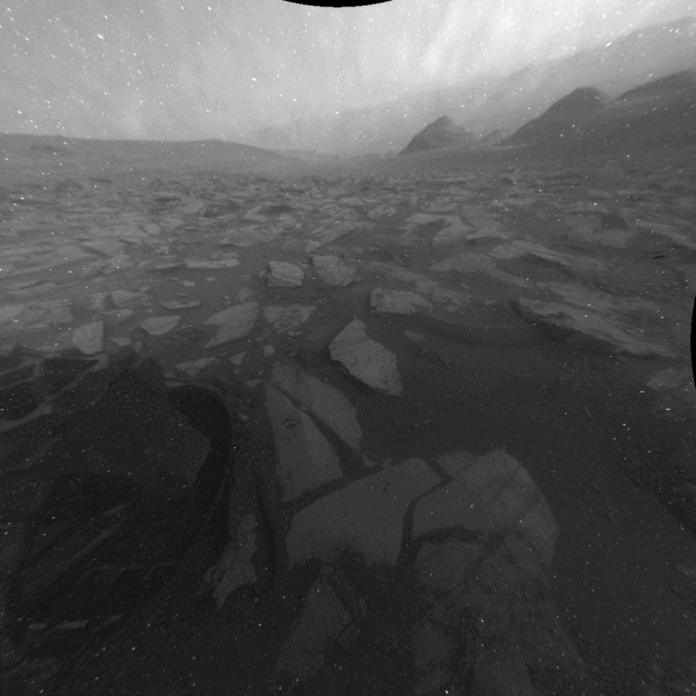
A Glimpse of a Day on Mars
The Mars rover Curiosity recently made a 12-hour static recording showing both sunrise and sunset. This footage gives us a unique glimpse into how a day on Mars looks.
Normally, Curiosity hurries around Mars in the name of science. However, occasionally the sun comes between the earth and the red planet, which can disrupt signals due to the ionized gases of our sun. This event is known as the solar conjunction and is the primary reason why scientists take a ‘break’ every two years for two weeks to ensure that equipment on Mars does not malfunction. For the speed-loving Curiosity, this primarily means parking and waiting until the event is over. Despite this forced pitstop, Curiosity still managed to work by taking a recording from sunrise to sunset on November 8th.
About Hazcams
Scientists had hoped to capture a unique weather phenomenon, but unfortunately, that didn’t pan out. The good news is, we can clearly see how an average day on Mars goes. We can watch the shadow of the rover crawl over the surface and see the sun’s trajectory across the sky. Sadly, the footage is in black and white because the so-called ‘Hazcams’ were used for the recording. These Hazcams only take black and white photos and play a crucial role in ensuring that the rover does not venture into dangerous terrain. For instance, Curiosity once had to turn back due to a massive accumulation of wind-borne boulders. The primary concern in such situations is the wear and tear that traversing through such hazardous terrains can inflict on the wheels.
A Dusty Screen
The above images come from the front of the rover, whereas the ones below are from the rear. These are the images that NASA’s scientists bring up several points about. Firstly, it’s crucial to remember that the images may appear somewhat ‘dusty’. This is mainly because there’s been no one there to clean the lenses, resulting in eleven years’ worth of dust accumulating on the rover’s exterior. Secondly, during the sunset, it seems like there’s some sort of ‘white snow’ hanging in the air. This is due to the cameras attempting to adjust to the light, causing an odd effect known as ‘hot pixels’. Finally, the scientists point out a random black spot that appears just before the sunset in the image. This is the result of a cosmic ray coincidentally hitting the Hazcams at that moment.











